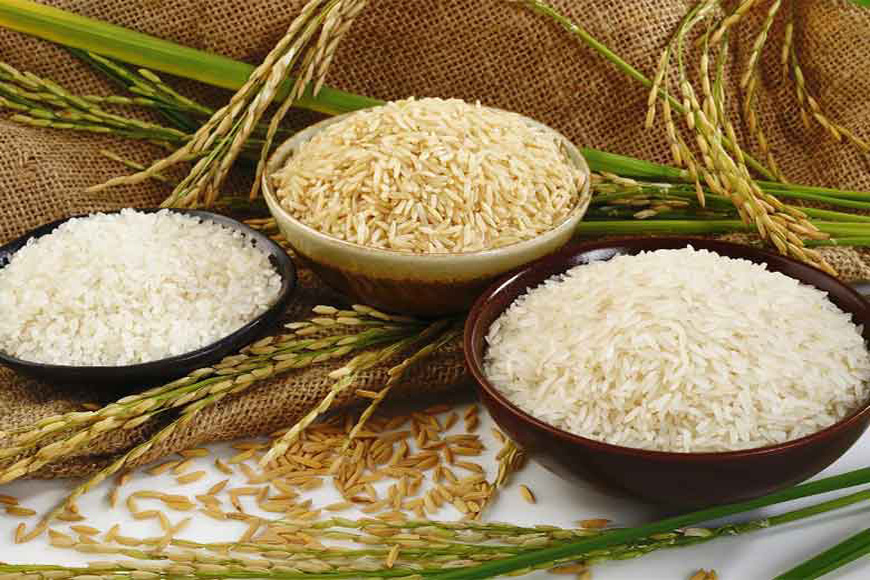Bengals Food Bowl Story of Two Wives

I was shocked when Lokman Molla referred to a paddy as Dui Satin (two wives of a polygamous man). Lokman got a jar-full of paddy from his stock. I noticed two pods of fine brown rice lying next to each other.
This farmer’s family from Mathurapur in South 24-Parganas,has been cultivating for generations. Previously, Lokman cultivated on six bighas of land, but now he has three bighas at his disposal. Before the cultivation of Aman rice begins in the month of Asharh (sown in the rainy season between July-August), Lokman plants the saplings in the wet, loamy soil. No fertilizer or pesticides are required. No extra water is needed. After five months, the crop is ready for harvest. Lokman yields approximately nine - ten maunds (one maund equals to 20 kilograms) per bigha.
Dui Satin rice is fluffy and light like cotton and takes time to digest. So, one doesn’t feel hungry after a full meal for a long time. Lokman mixes cow dung with soil before sowing the seeds and that is all he has to do to reap this high-yielding variety of paddy. This variety called Dui Satin, in South 24-Parganas is known as Jugal in Birbhum and Luv-Kush in Bankura.
In Bankura, this variety is grown on higher altitude farmlands and tastes a little different. In Birbhum, its red colour is a shade darker though it tastes the same. Lokman has two jars full of Tin Satin, another variety that his father cultivated. This paddy has slightly higher yield than Dui Satin. But, as Lokman informs, change in the environment has affected the cultivation of Tin Satin and it is no more as viable as it used to be. Now it yields about seven to eight maund in one bigha. However, Lokman intends to preserve the seeds and cultivates this variety on six kathas (one katha is 720 square ft). He does not want to give up the Tin Satin variety that his ancestors cultivated successfully for generations. He reminisces how he would sit amid his father’s vast verdant Tin Satin paddy fields in the evenings when he was a kid. He would wait with his bird-catcher to trap tiny birds that flew in to peck the seeds. Gradually it was noticed that birds acted as agents of cross pollination and Tin Satin seeds mixed with Dui Satin. Since then, cultivation of the two varieties of paddy in neighbouring fields was stopped. Tin Satin rice is softer and tastier that melts in the mouth. Lokman says his mother would cook and feed Tin Satin rice if anyone had stomach upset and insisted the rice had natural healing properties that could even cure loose motion and other stomach infections. Lokman remembers his mother’s words and so he still cultivates Tin Satin paddy on six kathas. Tin Satin is cultivated widely in the hilly belts of Birbhum. It is localized in the Nalhati region, populated by the aborigines or adivasis.
When Lokman got married, his father used to cultivate Heera-Moti variety on five bighas. He recapitulates how his mother would advise his father to include more land and cultivate Heera-Moti because now they had more members in the family. The daughters-in-law would eventually become pregnant and that would necessitate more rice for feeding the would-be-mother.
Original Article written by ZAFRUL HAQUE
on
www.bongodroshon.com
Translated by










